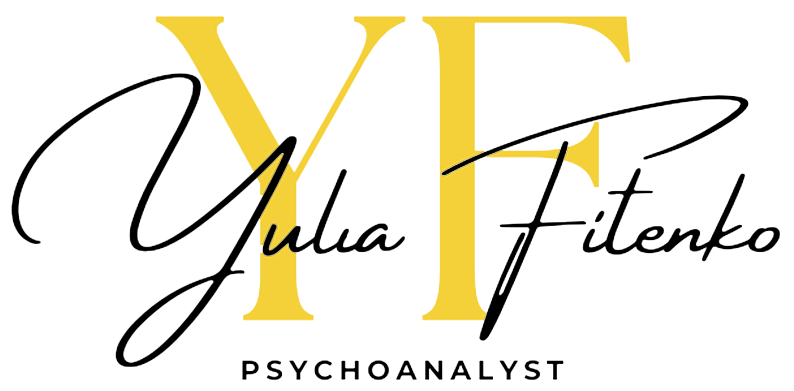Areas of Expertise
Areas of Expertise

Frequently Asked Questions
How do you determine which therapeutic techniques are most effective for each individual client?
I decide on the most effective therapeutic techniques for individual clients through a
combination of assessment methods and personalized approaches. Initially, I conduct thorough
assessments in the form of interviews to understand clients’ unique background, needs, and
challenges.
Additionally, I utilize a variety of therapeutic modalities, such as psychoanalytic, interpretative,
cognitive-behavioral therapy (CBT), mindfulness-based practices, or psychodynamic
approaches, tailoring my interventions based on what resonates with each client.
My methods are flexible and attentive to changes in my client’s situation, adapting my
therapeutic techniques as needed throughout the treatment process. This personalized and
responsive approach ensures that my clients receive the support that works best for them on
their journey toward emotional well-being.
In what ways do you utilize psychoanalytic methods to help improve interpersonal relationships?
I utilize psychoanalytic methods helping my clients improve interpersonal relationships in
several meaningful ways:
1. **Self-Awareness**: Psychoanalysis encourages clients to explore their unconscious
thoughts and feelings, helping them gain insight into their own behaviors and motivations
leading to better understanding and management of their reactions in relationships.
2. **Understanding Patterns**: My clients often discover recurring patterns in their
relationships during their therapy. By recognizing these patterns, individuals can work to
change negative cycles and improve their interactions with others.
3. **Emotional Regulation**: Psychoanalysis helps individuals process and express their
emotions more effectively. This emotional regulation can enhance communication skills,
leading to healthier and more constructive discussions in their relationships.
4. **Attachment Styles**: Exploring past relationships, especially with primary caregivers, helps
clients understand their attachment styles. This awareness allows them to address and modify
unhealthy attachment behaviors that might impact current relationships.
5. **Conflict Resolution**: By delving into underlying issues and exploring different
perspectives, psychoanalytic insight equips my clients with tools to navigate and resolve their
conflicts more constructively, fostering healthier interactions with others.
6. **Empathy Development**: Through the exploration of their own feelings, my clients often
develop greater empathy for others. This empathetic understanding can strengthen bonds and
improve their relational dynamics.
7. **Authenticity in Relationships**: Psychoanalytic insights encourage authenticity by helping
individuals confront their fears and insecurities. As my clients become more comfortable with
themselves, they can build more genuine connections with others.
8. **Boundary Setting**: My clients learn more about their own needs and limits, which can
empower them to set appropriate boundaries in their relationships with others, promoting
mutual respect and understanding. By addressing these various aspects, psychoanalysis helps
significantly enrich an individual’s interpersonal relationships, leading to more fulfilling
connections with others.
9. **Enhanced Communication**: Psychoanalytic experience provides individuals with tools to
express their thoughts and feelings more clearly and effectively. Improved communication skills
can lead to deeper, more meaningful conversations with their loved ones and friends.
10. **Strengthening Self-Esteem**: Psychoanalysis can help individuals work through feelings
of inadequacy or low self-worth that might affect their interactions in various social settings. A
stronger sense of self can lead to more confident and efficient engagement with others.
11. **Long-Term Relationship Satisfaction**: By fostering a deeper understanding of oneself
and one’s relational patterns, individuals can work towards more sustainable and satisfying
long-term relationships, whether romantic, familial, or platonic.
In what ways do you integrate your understanding of your clients’ emotional complexities into your treatment plans for your clients?
I integrate my understanding of my clients’ emotional complexities into my treatment plans
through several key approaches:
1. **Personalized Assessments**: I begin by conducting thorough assessments to understand
each client's unique emotional landscape, including their history, cultural background, key life
events, and coping mechanisms.
2. **Tailored Techniques**: I utilize a variety of therapeutic techniques tailored to each client’s
emotional needs.
3. **Emotional Awareness**: I emphasize the importance of emotional awareness, helping my
clients recognize and articulate their feelings. This process often involves exploring underlying
emotions that may be impacting their behavior and thoughts.
4. **Building Resilience**: By integrating emotional complexity into my individualized
treatment plans, I focus on helping my clients build resilience skills to manage their
overwhelming emotions and navigate challenging situations effectively.
5. **Supportive Environment**: I aim at creating a safe and non-judgmental space where my
clients feel comfortable expressing their deepest feelings. This supportive atmosphere is crucial
for fostering open dialogue about emotional challenges.
By utilizing these methods, I ensure that my treatment plans are not only effective in reaching
my client’s goals for their therapy but also resonate deeply with their experiences and
aspirations for growth.
How did your early experiences with language influence your understanding of cultural nuances in communication?
My early experiences with language played a crucial role in shaping my understanding of
cultural nuances in communication. Growing up in a multicultural environment, I was exposed
to various languages and dialects, each carrying its own set of cultural references, humor, and
emotional expressions. This diversity helped me recognize that words alone often do not
capture the full meaning of a message; tone, body language, and cultural context are equally
important.
As I learned diverse ways people express themselves, I developed an awareness of how cultural
backgrounds influence communication styles. For example, I noticed that some cultures
prioritize directness, while others may value indirect communication or euphemisms. By
engaging with diverse communities, I became adept at interpreting these subtleties which
allowed me to connect more genuinely with individuals from various backgrounds.
These early observations enriched my skills as a therapist, enabling me to create a supportive
environment where clients feel understood, regardless of their cultural background. I pride
myself on my ability to adapt my communication style based on cultural nuances which has
become one of my unique strengths, facilitating deeper connections and fostering trust with my
clients.

